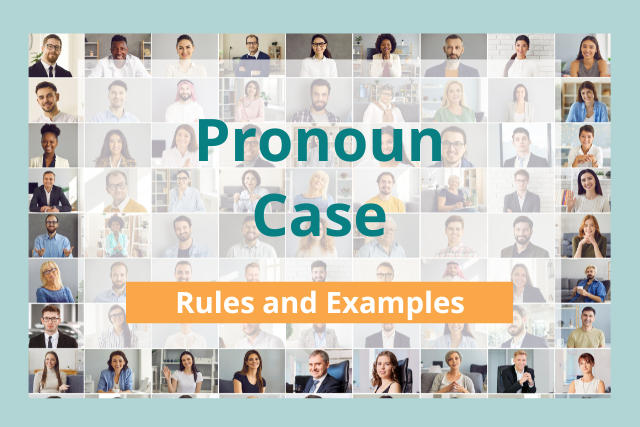
Pronouns are words that stand in for nouns like I, you, she, he, it, we, they, me, him, her, us, and them. There are many rules that determine proper pronoun usage.
Depending on a noun's position in the sentence, different pronouns may replace it.
For instance, in some sentences, you might use the word "he" as a pronoun and in sometimes you might use the word "him" as a pronoun. Both pronouns may refer to the same noun, but depending on the context of the sentence, one is correct and one is incorrect.
Let's look at an example. Say you're using different forms of the pronoun "he" to refer to a noun, "John."
In the sentence, "He fixed the problem," "he" is the correct form of the pronoun. However, in the sentence, "I like him," "him" is the correct form of the pronoun. Saying, "I like he" is incorrect.
Bottom line: in pronoun usage, context matters. Depending on the context and structure of your sentence, you will use a different pronoun.
Here are four rules we look for when examining proper pronoun usage:
Nominative pronoun usage: Replaces a pronoun in the nominative case incorrectly used as the object.
Incorrect example: I love she. Correct example: I love her.
Coordinated object case in the sentence subject: Corrects occurrences of a personal pronoun incorrectly inflected for object case when used as the second dependent in a coordinated conjunction.
Incorrect example: He and me fixed this issue. Correct example: He and I fixed this issue.
Possessive determiner as the object in a sentence: Fixes occurrences of a possessive determiner not used as a dependent of a noun head but incorrectly as a pronoun and a head itself.
Incorrect example: She likes my. Correct example: She likes me.
Using a reflexive pronoun instead of an object pronoun: Correct occurrences of the reflexive form of a pronoun instead of its unmarked form.
Incorrect example: I hurt me. Correct example: I hurt myself.
